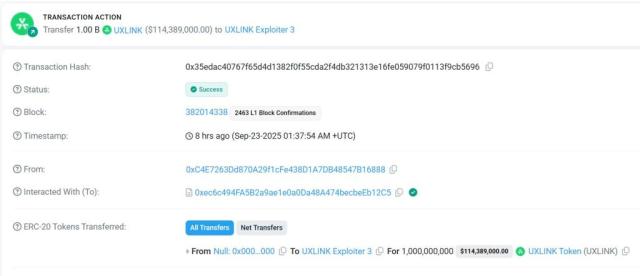- Dogecoin fell nearly 10% in a week despite a Fed rate cut, showing profit-taking and cautious sentiment rather than immediate inflows into risk assets.
- The first Dogecoin ETF, DOJE, launched in September with $17M debut volume, while 21Shares and Grayscale advance new proposals awaiting SEC approval.
- Memecoin volatility and regulatory uncertainty remain challenges, but ETFs could legitimize DOGE and expand access for retail and institutional investors over time.
Dogecoin struggles after the Fed’s rate cut but gains momentum through ETF launches like DOJE. Can liquidity, regulation, and investor demand reshape its long-term future?

RECENT PRICE MOVEMENTS
Dogecoin has faced a turbulent trading environment in recent weeks, reflecting broader uncertainty across global markets. As of late September 2025, DOGE trades around $0.238, representing a decline of nearly 10% over the past seven days. Earlier this month, the token briefly approached $0.26 before sellers regained control, pushing it back toward the $0.23–$0.24 support area. This level has become an important test of whether Dogecoin can stabilize in the near term.
Although intraday swings are common for a memecoin, the timing of this pullback has attracted attention. The Federal Reserve recently cut its benchmark rate by 25 basis points, a move that many investors assumed would provide a boost to risk assets, including cryptocurrencies. Yet the immediate response fell short of expectations. Instead of rallying, DOGE and other digital assets slipped modestly, reinforcing the idea that the policy shift had already been priced in well before the official announcement.

IMPACT OF THE FED’S RATE CUT
The Fed’s decision to ease policy was broadly anticipated. In theory, lower rates improve liquidity conditions and support demand for risk assets such as Dogecoin. Cheaper borrowing costs and greater liquidity often create an environment where speculative assets thrive. However, reality proved more complicated. In the hours following the announcement, Bitcoin, Ethereum, and Dogecoin each fell by roughly 2%, suggesting that traders chose to take profits rather than chase new highs.
This outcome illustrates a familiar dynamic: markets frequently move ahead of major policy announcements, leaving little room for further upside once the decision is made. For Dogecoin, this meant that the rate cut did not immediately attract new inflows. Instead, the token became part of a broader wave of cautious sentiment. Meanwhile, concerns about slowing economic growth and stubborn inflation linger in the background, tempering enthusiasm for a sustained rebound driven solely by monetary easing.
Still, the impact of the rate cut should not be dismissed. Over the medium term, easier policy has historically supported riskier corners of the market. If liquidity continues to expand and investors grow more confident in the Fed’s support, Dogecoin could recover momentum. For now, sentiment remains cautious, and traders are watching for catalysts beyond monetary policy to lift DOGE out of its current consolidation range.
DOGE ETF DEVELOPMENTS
One potential catalyst lies in the growing push to integrate Dogecoin into regulated investment products. In mid-September, the U.S. Securities and Exchange Commission approved a rules change simplifying the listing process for spot crypto ETFs. Previously, each application required months of individual review, often stretching up to 240 days. Under the new framework, some ETFs could reach the market in as little as 75 days.
This change has already had tangible effects. On September 18, the first Dogecoin-linked ETF, the REX-Osprey Dogecoin ETF trading under the ticker “DOJE,” began trading. Unlike a pure single-asset vehicle, DOJE uses a mixed allocation strategy that includes Dogecoin as a significant holding. While not a perfect mirror of DOGE’s price, its launch nonetheless marks an important milestone: Dogecoin has officially entered Wall Street’s toolkit of regulated products.
At the same time, other proposals are advancing. Swiss asset manager 21Shares has filed for its TDOG spot ETF, which has already appeared on the DTCC system in preparation for potential approval. Though this does not guarantee SEC clearance, it demonstrates that the infrastructure is being put in place. Grayscale has also entered the race, applying to convert its Dogecoin Trust into a fully fledged ETF, tentatively called GDOG, with Coinbase slated to act as custodian and prime broker.
MARKET RECEPTION AND RISKS
The launch of DOJE generated immediate trading interest, with first-day volumes reaching about $17 million. While modest compared to Bitcoin ETF debuts, it represents a respectable start for a memecoin-focused product. Supporters argue that the debut confirms Dogecoin’s longevity: what began as an internet joke is now represented alongside established cryptocurrencies in traditional markets.
Nonetheless, challenges remain. Unlike Bitcoin, often compared to “digital gold,” or Ethereum, which underpins much of decentralized finance, Dogecoin lacks a widely accepted use case. Its value is still tied primarily to community enthusiasm, social media activity, and high-profile endorsements. This reliance makes DOGE particularly vulnerable to shifts in sentiment. Even with ETF inflows, the token remains susceptible to sudden swings.
There is also the issue of tracking error. Because DOJE does not hold Dogecoin exclusively, its performance may diverge from DOGE in certain conditions. Investors seeking exact exposure should be aware of this limitation. Furthermore, regulators remain cautious. Although the SEC has streamlined approval for spot ETFs, memecoins remain a gray area, and future approvals could face additional scrutiny.
LOOKING AHEAD
Despite these uncertainties, the combination of macroeconomic shifts and ETF innovation is reshaping the outlook for Dogecoin. The Fed’s rate cut may not have delivered an immediate boost, but it has laid the groundwork for a more favorable liquidity environment in the months ahead. Meanwhile, the advent of ETFs offers a new channel for capital inflows, especially for retail investors who prefer traditional brokerage accounts over crypto exchanges.
If 21Shares’ TDOG and Grayscale’s GDOG join DOJE, Dogecoin will suddenly have multiple ETF products in circulation. That development would provide a legitimacy once unimaginable for a meme-inspired asset. Yet the ultimate question is whether institutional and retail demand will be strong enough to offset the token’s volatility. In a market where social trends can dictate massive price swings, ETFs may offer structure, but they cannot eliminate risk.
For investors, the message is clear: Dogecoin is entering a new phase. Its price will still be shaped by hype, community activity, and macroeconomic conditions, but now also by regulated institutional flows. As liquidity shifts and regulatory frameworks evolve, DOGE may find itself at the heart of a larger debate over how far community-driven assets can integrate into mainstream finance.
〈Dogecoin’s Price Struggles Amid Rate Cuts and the Rise of ETF Ambitions〉這篇文章最早發佈於《CoinRank》。








